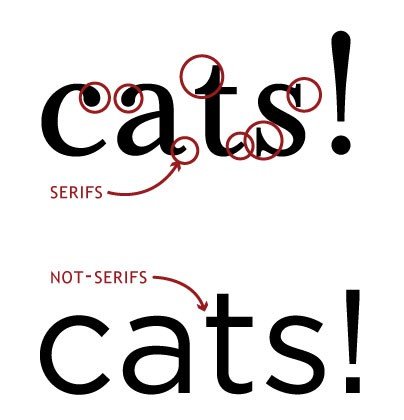Sans serif.
Photo by Niklas Bildhauer
By: Tim Cynova // Published: October 23, 2015
[Editor’s Note, 2021: This piece is in need of a serious update and some clarification with nearly seven years of hindsight. Stay tuned.]
Recently I estimated that with all of our hiring at Fractured Atlas more than 7,500 resumes have come across my desk since 2009. It’s certainly not Google or Facebook numbers by any stretch, but a significant number nonetheless.
Each time we post a position and receive 300+ applications in return, I make notes to myself about the things that hinder what might otherwise be outstanding candidates. It might be unfair, but these little things can consciously or unconsciously set you apart, or scuttle your shot. Don’t let these things — some of which are quite superficial — prevent you from landing your dream gig with a great organization.
Your application is being compared against other candidates who bring it, who write a bespoke cover letter, who polish their prose, who perfect their design. Don’t be left behind.
Just as great art poorly marketed can lose out to mediocre art splendidly marketed, so too can candidates who submit sub-par applications versus those who take the time to polish each aspect of theirs.
I’d like to share my notes here because I believe it benefits the entire cultural sector when organizations find the great people who can help them achieve amazing things.
So here they are, my tips for submitting a strong application:
Image by Sarah Semark
Sans serif. Dear God, please use a sans serif font for your materials. Using a serif font with all of its embellishments makes my eyes bleed after reading only a few sentences on the screen. Think about the person reviewing your application. They’re likely reading hundreds of competing applications. Make it easy for them to read the great stuff you wrote. Serif fonts do not make it easy. It’s like trudging through molasses. After only a few sentences I find myself skimming over the materials trying to glean the gist rather than taking in the substance of your argument.
Aesthetics and uniformity count. Use the same style and font throughout your application materials. You might be surprised by the number of applications that include a beautiful and cleanly designed resume attached to a cover letter that’s the equivalent of something scrawled on a cocktail napkin. Aesthetics count. Come on, we’re in the creative sector. By our very nature, we strive to make life more beautiful. Let that extend to your materials. Make your entire application packet match. Use the same fonts, colors, and overall design choices throughout, not just on the resume. Make it all something appealing to look at and read.
PDF It. At Fractured Atlas we ask for all of the application materials to be wrapped up in one PDF file and saved with the applicant’s name as the file name. Here’s what happens: We download all of the files to one folder and when the position search closes we go in and review them. If you don’t include it as a PDF, but say a Word file, your formatting goes out the window when opened on a machine other than yours, or one that doesn’t have the same fonts installed. Do yourself a favor and save your materials as a PDF so you’re certain that what we see is what you intended. Also, if you don’t save the filename with your name as the title but instead title it something like “Resume”, when it gets transferred to the folder with 300+ applications your application is literally lost in the shuffle. When we come to your name in the applicant tracker, your application is nowhere to be found. All of your hard work is in effect for naught.
Attention to detail. You can’t just say you possess great attention to detail while misspelling the company name, including a typo in the first sentence, and submitting materials in the wrong file format from what was requested. When the job calls for a stellar attention to detail, and your application materials include errors, how are we to believe that your actual work product won’t include similar errors as well? It’s like a Maslow’s Hierarchy of Needs. I imagine that you clearing the hurdle to get a job so that you have food and shelter ranks higher than a typical day in the office. If that’s true, your job application should be better crafted than most things you produce in the “wild.” We can’t have stellar attention to detail every time, but need to exhibit that we can at least have it for something we really care about as a baseline for demonstrating that we have those qualities to dedicate to our work.

Mad Libs cover letter. Look, we’ve all done it. It’s called boilerplate. We’re sending our application to a lot of organizations, are pressed for time, so rather than sit down and think, how can I express in writing to the company that I really get them, we write a letter that easily accommodates switching out the name of the company and some generic line about believing in their mission. We’re not fooling anyone. It’s easy to spot these letters. Mainly because most of the letter isn’t about the company, it’s about you. Take the time to craft a bespoke letter for each position you really want and skip the positions that don’t really interest you. Your effort here will yield better results in the long run. Related, don’t restate your resume in your cover letter. If you do this, you’re simply wasting valuable real estate that could be used to add more depth to you as an applicant.
Dot. Dash. Dot. The Morse Code cover letter. Here’s a trend I’ve been seeing recently. People submitting cover letters that consist of one micro paragraph followed by one loooooooonnngg paragraph, and closing with one micro paragraph. Long, large blocks of text lose your reader, particularly if they’re reading it on a screen. Make it easy and breezy to review your materials. Less is more. Open space on the page is attractive. Dense text blocks with 0.5" margins filled to the brim make people glaze over and skim. Every time I see one of these cover letters I’m reminded of a quote often attributed to Mark Twain, “I didn’t have time to write you a short letter, so I wrote you a long one.”
Distill, distill, distill until your cover letter is the equivalent of an incredibly delicious shot of fine espresso.
There’s no “I” in team, nor should there be at the start of each paragraph in your cover letter. Don’t start every sentence of your cover letter with “I” (or “My” for that matter). Starting each paragraph with “I” and/or “My” usually demonstrates that you lack a true understand of what we do at Fractured Atlas, who we serve, and how we serve them.
Business letter format. Use your application as a chance to show that you can correspond professionally. Do this by submitting your cover letter in proper business letter format. (Hint: The format includes the date, and the very first line on the page does not start “Tim,”)
Photo by Stéfan
These are not the droids you’re looking for. You might be surprised by how many people out of 300 start their cover letter by saying, “Great news, I’m who you’re looking for, you can stop your search!” Or that their ability to listen is better than anyone else’s. Or that their attention to detail is better than anyone else’s. Everyone is not in the top 99th percentile, and if you’re telling me that in a cover letter and not demonstrating it, you’re probably not in the 99th percentile. Demonstrate that you’re the person we’re looking for by writing a cover letter that conveys that you get Fractured Atlas and our members’ needs. Let us decide if you’re the person we’re looking for.
Plain English, please. Don’t be unnecessarily fancy in your language. Don’t say “utilized” when you can just as easily say “used”. This might be attractive at some companies, but at Fractured Atlas we spend a lot of our time trying to distill and explain complex and often confusing concepts as clearly as possible — tax law, the insurance industry — use plain, straight-forward, and easy-to-understand language.
Don’t include an objective on your resume. OK, I know there are a few different camps on this one, but I firmly land in the cynical your-objective-is-to-get-the-job-so-just-leave-it-off-of-your-materials-and-use-the-space-for-something-else camp. For many young people entering the workforce their objective should be to be exposed to as much as possible so they can refine where they want to go and what they want to be when they grow up.
A dash of arts. A professional resume for an administrative position should not include a lengthy list of your artistic activities. Again, this might vary by organization, but for us, we like to know that you have an artistic bent — for instance, every staff member at Fractured Atlas was an artist at some point in their life, and half of our staff are still practicing artists — but once that’s established we certainly don’t need to see your entire palmerès. Use that new-found space to include other things that are relevant to you excelling in the position and adding value to the organization.
Photo by Ryan McGuire
Time is not a proxy for expertise. When I read in application materials, “…for nearly one year,” or “3+ years…” or “over 20 years of experience,” the embedded assumption is that the longer you have spent doing something the better you are at doing it. Tell me how you demonstrated your expertise by what you delivered and how you achieved it. For all I know, if you say you’ve been doing something for 20+ years, that might just mean you’ve been doing something poorly for a very long time.
Bonus #1: Remove “References available upon request” if the references are requested. (See also “Attention to detail.”)
Bonus #2: Email isn’t broken. Here’s one I’ve used before when applying for jobs in an attempt to get a prospective employer to look at my materials. It’s the ol’ “Just want to make sure you received my email as I was having problems with Gmail / Outlook / my internet connection, etc.” We’re no longer submitting resumes by messenger pigeon. The email made it. It’s a less than sly way of following up with a prospective employer, especially one who says “No calls.” Let the process work. That said, if you have a friend or colleague in common with someone in the organization, now is the time to see if that person can put in a good word for you right after you’ve emailed your materials. Otherwise, sit tight. I can promise you that the employer hasn’t forgotten that they need to fill the position.
Searching for and securing a job is a full-time job. I’ve been there and know how exhausting and sometimes dispiriting the process can be, especially when you really want to work for an organization (I’m looking at you New-York Historical Society circa 2007). Keep the faith and keep your chin up. (If I had gotten the gig at NYHS, I wouldn’t now have the best job ever at an incredible organization with kick-ass coworkers doing amazing work.) Things have a way of working out in unexpected and awesome ways.
The tips above can help grease the skids so you see rewards for your hard work. Obviously the application is just one part of the process to get a job. It’s just to get you in the door for an interview so you can bring your application to life.
Don’t be dismayed if you don’t get an interview. Over the years we’ve interviewed people who haven’t been right for a position one time around and who get the exact position in a future search. Only some of it is you. The other part is the current team composition, the organization’s current programs and growth plans, and which candidate is going to build on both the team and organization at that point in time.
Good luck and Godspeed in your search, and please, dear God, use a sans serif font.
Tim Cynova is a leader, HR consultant, and educator dedicated to co-creating anti-racist and anti-oppressive workplaces through using human-centered organizational design. He is a certified Senior Professional in HR, trained mediator, principal at Work. Shouldn’t. Suck., on faculty at New York’s The New School and Canada’s Banff Centre for Arts and Creativity, and for the past twelve years served as COO and then Co-CEO of the largest association of artists, creatives, and makers in the U.S.



